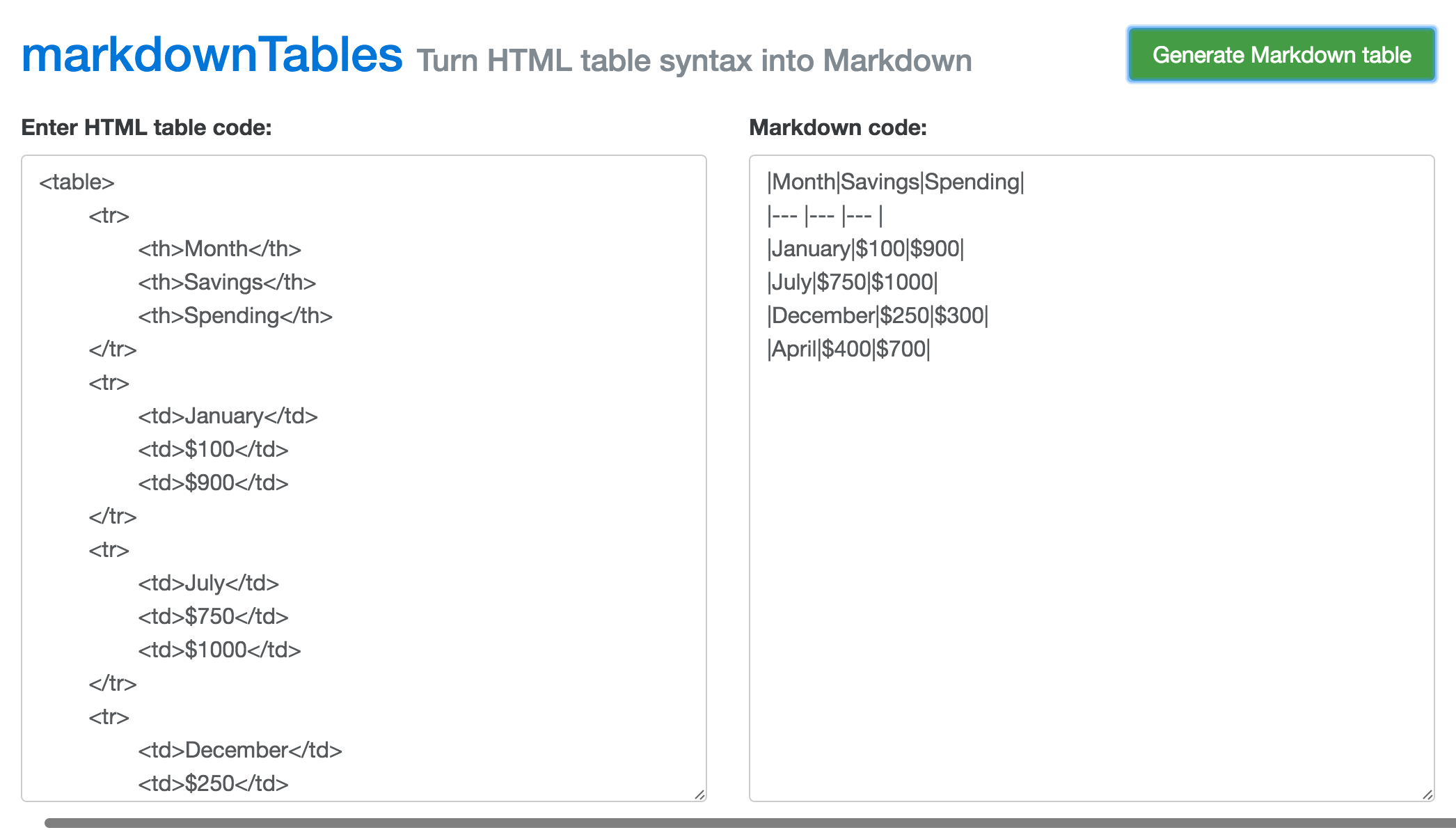

If you find this first newsletter, please subscribe to my newsletter not to miss future publications.
#Table rmarkdown code
In the following newsletter, I will start interpreting the code above to help you understand what each portion of the code does to create the table below. In future newsletters, I will continue using this code to introduce what RMarkdown can achieve to support your efforts to assess student learning. Use the gtsummary and gt packages to create to create publication-ready. As Yihui Xie puts it, printing objects in R code chunks basically emulates the R console. If you are using RMarkdown (and, if you’re not, you should really consider it), any data frame that you call in a code chunk is displayed using the data frame printing method set in your YAML. Using the rmarkdown::pagedtable () function to create a page-able version of a data frame. Customizing Default Table Output in RMarkdown. Adding a few lines to the code below will allow extensive data-wrangling opportunities such as filtering, manipulating, recreating data and advanced statistical analysis is possible. There are a number of options available for displaying tables within Distill articles, including: Using the knitr::kable () function to render a data frame as HTML. Kable_styling(latex_options="striped",full_width = T)Īt this point, all you need to know is this code creates the report below. To see what it's all about, try one of these examples, or format your own. The following table summarises which types of output each option suppresses. It adds padding to all the cells to line up the pipe separators when using a mono-space font. R Markdown documents are fully reproducible and support dozens of output.

#Table rmarkdown pdf
What I mean by “tidy data” is that each column represents a variable, and each row except the first row represents a student record, and the first row includes all the column names.īelow is the short code which converts a tidy csv file into a pdf report. This tool formats basic MultiMarkdown style tables for easier plain text reading.

The Tidy DataĪs you see below I work with tidy data to create my first report. Simply select the table you'd like to export by right-clicking and choosing Inspect, then open the Table to Markdown tab and hit Convert This extension can handle a wide variety of HTML tables, including tables with missing cells, tables without headers, and tables with cells that span multiple rows and columns. If you are interested in installing R and RStudio, I will encourage you to check out YouTube and other sources on the Internet. In this first newsletter, I will share a simple code to read a csv file with fictional student grades and create a two-page PDF report (the first page being the title page) using RMarkdown in RStudio. But, for some reason, if you have heard R before and wonder in simple terms how it is used for simple tasks, this newsletter may be of your interest. In fact, I am not even recommending you to use any particular tool at this point. Unlike many other resources in which everything starts with installing R, RStudio, R packages, file and project structure, etc., I will not bore you with any details initially. Welcome to my newsletter, in which I will be sharing my learning notes.


 0 kommentar(er)
0 kommentar(er)
